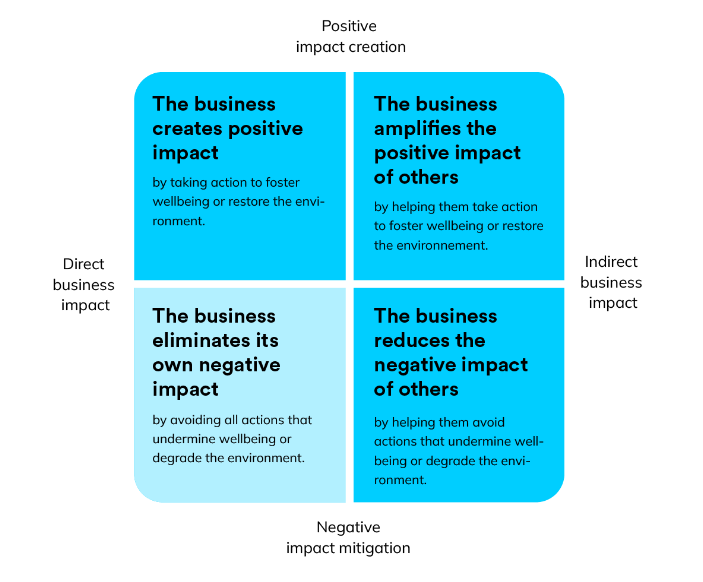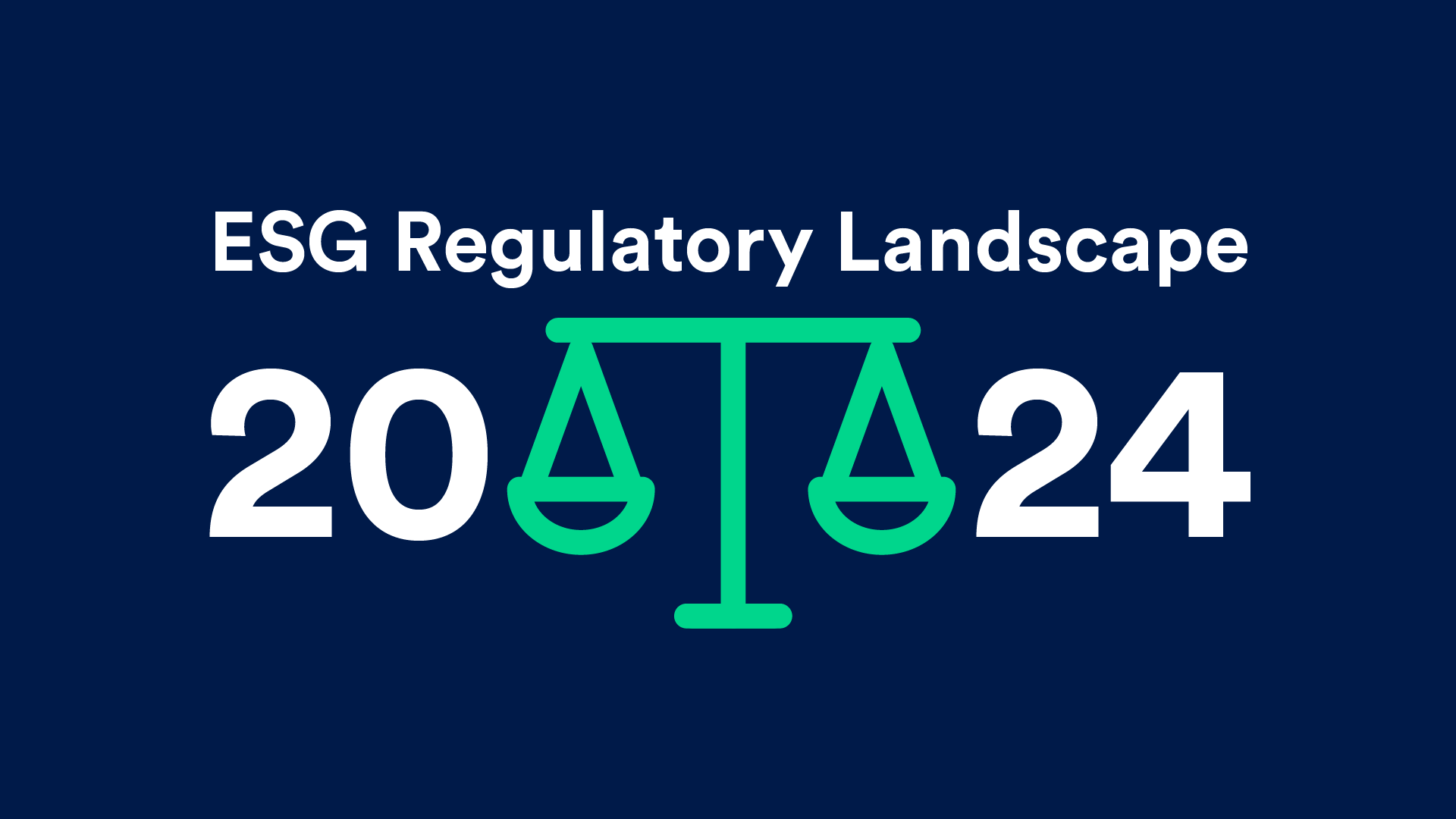Positive contribution analysis to define a sustainable objective
Full methodology of our Positive contribution analysis to define a sustainable objective
5 Questions to ask
Were the relevant activities delivered in the year of analysis?
To be included in the selection process of the company’s positive impacts, the activities connected to that impact must take place in the year of analysis. Activities that took place in previous years or that a company plans to implement in the future are outside the scope of the analysis.
In the latter case, the company’s impact is hypothetical. This is the case, for example, when an organization plans to develop a project in the future, market a product soon, launch an impact fund next year, etc.
An activity that is not delivered in the year of analysis cannot generate a positive impact. When an activity does not meet this criterion, the other criteria are not analyzed. We recognize, however, that it may be interesting to know the effect of these activities and the underlying intention of the company, as well as the outcome and SDG target that these activities aim to achieve. Thus, these activities will still be presented in the section on positive impacts considered.
Does the impact that the company wishes to generate through a specific activity fall within the scope of a Sustainable Development Goal (SDG) target?
We have chosen to focus on SDGs because they are the most widely agreed-upon targets, both politically and in the industry. SDGs are not a perfect framework, but they form a list of urgent issues that society needs to address. For now, the SDG framework is the only framework considered when assessing positive impacts, although other recognized frameworks may be used in the future. In addition, to support the selection of positive impacts, we regularly refer to reliable sources that deepen our understanding of the goals and support the materiality of the impact.
As an example, let’s consider target 3.3 “By 2030, end the AIDS epidemic, tuberculosis, malaria, and neglected tropical diseases, and combat hepatitis, waterborne and other communicable diseases.”
This target has been translated into two outcomes to which a company can contribute:
The ending of the epidemics of AIDS, tuberculosis, malaria, and neglected tropical diseases
Reduction in hepatitis, water-borne, and other communicable diseases
A company’s activity aiming to contribute to the first of these two outcomes must specifically target one of the following diseases:
AIDS
Tuberculosis
Malaria
One of the neglected tropical diseases identified as a priority by the WHO and identified in the Access to Medicine Index
Similarly, to contribute to the second outcome presented, an enterprise must specifically target one of the communicable diseases identified as a priority in the 2021 Access to Medicine Index.
Outside of this framework, an activity cannot be considered to contribute to target 3.3. More generally, if there are no links between the activity and a target of an SDG, the activity is not considered to be generating an impact.
Does the impact go beyond the mitigation of one of the organization’s negative impacts?
While the previous step allows the company’s activities to be linked to the target of a Sustainable Development Goal, this step aims to analyze whether the effect of these activities goes beyond mitigating the company’s negative impact to generate a positive impact.
Indeed, a positive change in the life of a beneficiary does not automatically mean a positive impact. The IMP identifies the threshold point at which stakeholders consider the outcome to be positive. Below this threshold, an activity that generates a positive change can only mitigate the company’s negative impact.

Let’s consider a company that generates renewable energy through wind turbines. Step 3 questions whether the company generates this renewable energy for others – and contributes to increasing the share of renewable energy in the global energy mix – or for its energy consumption. In the latter case, the company is only potentially mitigating its own negative impact, and the renewable energy activity will therefore not be considered to generate a positive impact.
If the activities put forward by the company correspond to a mitigation of the company’s negative impact, the activities are not considered to generate a positive impact.
Is the Theory of Change, the logical chain between activities and stated impact, valid and recognized?
The Theory of Change is fundamental to initiating impact transformation and should be part of any organization’s efforts to generate an effective positive impact. It is embedded in the IMP framework and used by analysts to validate the logic behind creating impact.
Theory of Change (ToC), sometimes referred to as the Impact Chain, is a specific type of planning, participation, and evaluation methodology that is used in business to promote social change. It explains the process of change by describing the causal links of an initiative, i.e. its short-, medium- and long-term effects and, most importantly, how outputs turn into outcomes.
The identified changes are mapped – as a “results path” – showing each result in logical relation to all the others, as well as their chronological flow. The links between outcomes are explained by “rationales” or statements about why one outcome is considered a prerequisite for another.
Two main elements are analyzed at this level:
- The context in which the impact is to occur. This includes the problem to be addressed, the level of response to it at the time the activities are generated, and the need of the beneficiaries.
Indeed, for some outcomes, activities must take place in a specific context for them to generate a positive impact. For example, to contribute positively to the outcome “Increase in access to decent, safe, and affordable housing,” a company must target populations currently lacking access to decent, safe, and affordable housing. In this way, the company contributes to increasing access to decent, safe, and affordable housing.
- The conditions that must be met for the activity -> output -> outcome logic chain to be valid. For example, a residential property management company claims that it improves the health of its occupants by promoting the use of sports facilities in the building. Before this claim can be considered a positive impact, the company must prove that occupants are using the facilities properly and regularly.
The organization must provide sufficient information to assess, with a low level of doubt, whether the activities are likely to generate a positive outcome. If the link between the activity and an SDG target is unclear, or if it is a controversial link (without expert consensus), the activity is not considered to be generating a positive impact.
Is the Theory of Change, the logical chain between activities and stated impact, valid and recognized?
Establishing/determining financial materiality – Percentage of activity
If a percentage of activity that contributes to the positive impact can be calculated and is <0.01%, we do not consider the impact as material.
Additionally, we developed a set of qualitative criteria that enable us to retain activities for which there is sufficient qualitative information to assess the financial materiality but a lack of quantitative information provided (no financial reporting, for example). These qualitative criteria limit the risk of overestimating a positive impact (impact-washing). At the same time, they enable impak to still consider material impacts for companies that do not report precise financial figures.
For the overall process of selecting positive impacts, we developed an internal positive taxonomy that aims to reflect the scientific consensus on the effectiveness of a specific activity to generate a positive outcome affiliated with an SDG target, for each of the most common positive impact activities in the sectors analyzed. This classification tool also provides the criteria and conditions of change that must be met (reflecting the steps above) for the activity to be selected as generating a positive impact.
You may also like

Why single materiality is not good risk management
By impak Analytics
Why agribusiness giants won’t save the world from hunger.
By impak Analytics